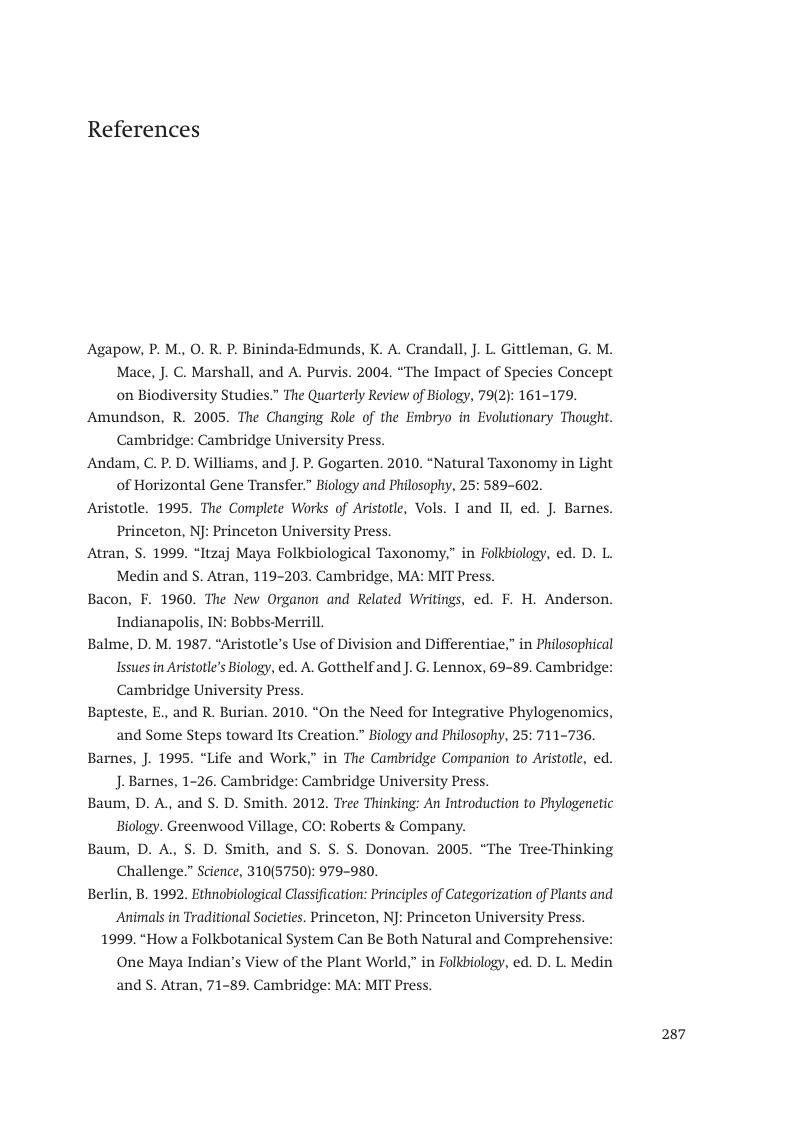Book contents
- Biological Classification
- Cambridge Introductions to Philosophy and Biology
- Biological Classification
- Copyright page
- Dedication
- Contents
- List of Illustrations
- Acknowledgments
- Introduction
- 1 Why Classify?
- 2 The Aristotelian Framework
- 3 The Darwinian Pivot
- 4 Evolutionary Taxonomy and the Cladistic Challenge
- 5 The Tree of Life
- 6 The Species Problem
- 7 The Metaphysics of Biological Classification
- 8 Theory and the World
- 9 The Essential Tension
- References
- Index
- References
References
Published online by Cambridge University Press: 05 September 2016
- Biological Classification
- Cambridge Introductions to Philosophy and Biology
- Biological Classification
- Copyright page
- Dedication
- Contents
- List of Illustrations
- Acknowledgments
- Introduction
- 1 Why Classify?
- 2 The Aristotelian Framework
- 3 The Darwinian Pivot
- 4 Evolutionary Taxonomy and the Cladistic Challenge
- 5 The Tree of Life
- 6 The Species Problem
- 7 The Metaphysics of Biological Classification
- 8 Theory and the World
- 9 The Essential Tension
- References
- Index
- References
Summary

- Type
- Chapter
- Information
- Biological ClassificationA Philosophical Introduction, pp. 287 - 298Publisher: Cambridge University PressPrint publication year: 2016

